Hearthstone officially celebrated one full decade on the market just over a week ago. It’s really hard to believe that it’s been that long to me, and for players who started before the game’s official full launch, it’ll be even longer for you! Hearthstone has grown a lot as a game over the course of 10 years with nearly 5000 different cards and a myriad of different game modes added during its run. To celebrate all the fun years that the game has had, I thought it’d be fun to look through all of the old Legendary cards that were part of the original Classic set, which basically functioned as the base set. There’s a lot of history behind these old cards.
This will be a four-part series. In the first part, I looked all of the class Legendaries of the set. In this part and the next two, I'll be looking at all of the Neutral Legendaries. We'll be going in order of ascending cost meaning that this part will feature the low-Cost Legendaries and then next two parts will feature the more expensive ones.
Bloodmage Thalnos
Bloodmage Thalnos (or Thalnos the Soulrender) is a very simple card, even for Classic standards, and at first glance it doesn’t seem that strong or exciting, which causes a lot of new players to overlook it in favor of something that looks flashier. After all, does a mish-mash of Kobold Geomancer and Loot Hoarder seem that exciting to you? Not really, but despite not looking the part, Bloodmage Thalnos has seen play for pretty much the entirety of the game’s lifespan. For a card that has remained unchanged since the Classic days (other than being given the Undead tag), that’s pretty damn impressive.
What exactly makes Bloodmage Thalnos so good though? The answer to that question is that he does a lot for so cheap. He’s a source of Spell Damage, a source of draw, and a body on the board. Sure, his body is only a 1/1, but it’s still 1/1 more than the card could’ve given you. The Spell Damage will also mean your opponent will try to kill it as quickly as they can, and then you get a draw when that happens.
People don’t play Spell Damage minions for stats. They play them for Spell Damage, so the stats don’t really matter that much. It’s more about being cheap, and Bloodmage Thalnos fits that bill. Azure Drake is a card that saw play almost everywhere back in the day, and Bloodmage Thalnos is basically a smaller version of that, so it makes sense why it ended up being as strong as it was. If you’re ever running a deck that likes to use burn spells, Thalnos is always a good card for the deck.
Thalnos as a character doesn’t seem to have a lot of lore behind him compared to many of the other Legendaries in the set (particularly the class ones). I chock this up to the fact that Team 5 realized that they needed at least a few tiny Legendaries (which were a very rare thing back in the game’s early years), so they probably needed to take some liberties in choosing characters for small Legendaries.
Lorewalker Cho
Lorewalker Cho is the leader of the Lorewalkers, which from what I can tell, are basically a group of Pandarens (and one random Jinyu) who want to explore the world to create an archive of anything and everything. Seems like a pretty respectable goal to me. I reckon the inclusion of Cho was most likely to add some Pandaren representation to the list, and to do so in a way that isn’t just the two Brewmaster cards.
He has a pretty interesting effect which puts copies of spells into other player’s hands, and his type of interaction is still fairly unique all things considered. Very few cards in the game have an active interaction between both players in the way that Lorewalker Cho does. Presumably the intention of this is that you’d play Cho in a deck with very few spells and thus the downside of tossing spells to your opponent is largely mitigated whereas they will still have to be cautious about what they throw over to you. Since you’re unable to attack with him though, your opponent generally has more agency over how long this effect is allowed to stay on board.
This means that Lorewalker Cho was never really a strong card in any sense. Even if you would sometimes put your opponent in a rough position and basically force them to give you some spells, his effect would also discourage you from casting those spells as you would just give them right back to your opponent. What Lorewalker Cho was good for was just having some dumb fun. If two players were to keep throwing a Divine Spirit back and forth on Cho and then cast Inner Fire on it, you would end up with a Cho with over a million Attack. Even if Cho hasn’t been a good card competitively, he would sometimes be a really funny card to goof around with. And credit where it's due, his opening music when you play him combined with his voiceline is really majestic.
Speaking of his voicelines, did you know that Lorewalker Cho had them changed at some point? When Goblins vs Gnomes was launched, his summon soundbite was changed from “Show me what you’ve learned.” to “Jade Serpent guide you.”, and his attack soundbite was changed from “Good, good.” to “Hmm?” - Soundbite changes are a very rare thing to happen in Hearthstone. Off the top of my head, I can count basically all the ones I know on one hand, so it's always weird when it happens.
Prior to full release, he also had an entirely different effect, which was “If you end your turn without playing a card, draw a card.” - Definitely for the best that this effect was changed because once you reach turn 3, you’ll basically never activate this effect unless you just simply have no playable cards in your hand.
Millhouse Manastorm
Millhouse Manastorm is a gnome Mage who escaped jail and joined the Twilight’s Hammer cult. He’s also married to Millificent Manastorm, and it seems that they should probably get some marriage counseling if they want any hope of saving their relationship.
Sadly things do not seem to come up milhouse for Millhouse as he is widely regarded as one of the worst Legendary cards (if not just simply worst cards overall) in the entire game, so much so to the point where a Golden Millhouse Manastorm in particular is known as a “free Legendary”. His effect of making all of your opponent’s spells cost 0 is simply backbreaking. This is presumably intended to allude to the fact that Millhouse was never able to cast his Impending Doom and by the time he would, you’d have enough mana to throw anything you want at him. I suppose this is a funny way to implement this flavor, but it does also mean the card is just simply unplayable.
The intention of the effect appears to be that you play it specifically on turn 2, getting you a larger than average body for the cost, and your opponent won’t be keeping expensive spells in their hand. This however has some big caveats of dramatically dropping off later in the game, as well as the fact that your opponent could just end up drawing a big spell early without meaning to. Even if they don’t though, they only need to save about 2 mana before they’ve basically broken even or gotten ahead of you on value.
At least he has DJ Manastorm printed in Festival of Legends as a much better card. I believe regular Millhouse and his DJ counterpart have the highest Cost difference between two different versions of the same character, and it’s pretty hard to get any higher than it.
Nat Pagle
Nat Pagle is a fisherman, the best in all of Azeroth in fact. To the point where he has his own brand of fishing gear. He is named after Senior Game Designer at Blizzard, Pat Nagle. Sadly for Pat, his namesake character is more iconic than the man himself. But he’s probably better than his card…
And that’s because his card sucks. In all fairness, he was much better in Alpha when he had 5 Health and his effect happened at the end of your turn instead of the start. I can only assume that he was playable before official release even with the player being at the mercy of the coin toss or else there’d be no need to change him. When the game officially came out to the public though, he ended up not working out due to being really weak and his effect occurring at the start of your turn rather than the end, meaning that he can be freely traded into without giving you even so much as a coin flip for one card.
In Whispers of the Old Gods, he got a corrupted version in the form of Nat, the Darkfisher. He’s quite a bit stronger statwise, but his effect causes your opponent to draw a card instead of you. Suffice to say, he’s not really much better than his Classic counterpart. He does appear on the artwork of Gone Fishin', which is a pretty solid card though, so at least he has that going for him.
King Mukla
King Mukla is a giant gorilla in Stranglethorn who seems to be based off of King Kong or Donkey Kong in both size as well as also capturing a female figure that you set off to rescue. In World of Warcraft, his Barrel Toss attack also appears to be a reference to Donkey Kong. In game, Mukla is similar to Millhouse Manastorm in that he has a giant body for his small Cost but comes with a downside. Mukla’s downside however is nowhere near as catastrophic as it simply gives your opponent two Bananas. Aside from being a larger than average body for the Cost, the Bananas also cost mana to remove which might sometimes throw off your opponent’s game plan as they might need to play the Banana instead of playing on curve.
Mukla’s main purpose is for an aggressive gameplan where you quickly fill your board with stats and ideally put your opponent in a rough spot before your opponent can take advantage of the downside. He also has some niche application in Mill decks where you can fill your opponent’s hand with Bananas that your opponent will have to spend mana to get rid of and you might even cause your opponent to burn a card. Mukla’s strength however tends to fall off later in the game as your opponent will more likely be able to actually use the Bananas efficiently on their turn. Mukla is also quite weak against decks that focus on spell synergy as the Bananas will give them two very cheap triggers. Overall, while Mukla is far from the worst Legendary from this era, he’s definitely not the greatest either.
Despite his rather unassuming nature in both Hearthstone and World of Warcraft, Mukla has actually been the focus of not one, but two other cards. His first reprint was a corrupted form in Whispers of the Old Gods as Mukla, Tyrant of the Vale. Sometimes the Old Gods' corruptions gives you power untold, sometimes it changes which player you give Bananas to. We can’t all be winners in the Eldritch lottery.
At some point, he apparently became an award-winning musician because his second reappearance is in Festival of Legends as Mister Mukla with his hit song, Stranglethorn Heart.
Tinkmaster Overspark
Tinkmaster Overspark is a Gnomish engineering trainer in Tinker Town who’s allied with the Alliance and that’s basically it. The presence of several characters with not much importance might seem odd in retrospect, but I suspect that this was probably done as a futureproofing measure. How exactly transforming something into a Squirrel or a Devilsaur ties into his character is something I wouldn’t be able to tell you. I guess it just generally refers to a haywire gnomish invention?
Though it’s no secret that Tinkmaster Overspark is a really bad card even back in the day, and even if Hearthstone was your very first card game, most people would probably be able to tell how bad the card is after playing the game for about one week. It’s not really difficult to figure out why he’s bad. He’s not reliable in the slightest, and if he backfires, it can be really catastrophic.
But in spite of the fact that he’s so terrible, you may be surprised to learn that Tinkmaster Overspark used to see play. Back in the game’s closed beta, his Battlecry was targetable though whether or not the chosen minion was transformed into a Squirrel or Devilsaur was still random. In this state, you could target something like Ragnaros the Firelord and regardless of whether you got the Squirrel or the Devilsaur, you were still making your opponent’s minion weaker and removing any nasty effects on it. If you were lucky enough to get the Squirrel in this instance, you basically just got a Polymorph with a 2/2 body for 1 less mana… and one that every class can run. Tinkmaster Overspark was so widely played during the closed beta that one of the earliest Trolden videos is dedicated to commemorating the card in its original form before being nerfed to the point where no one would use it anymore.
While the version we’ve had since release may be a really terrible card, it’s probably for the best that the card was changed as it would’ve likely otherwise continued to remain a staple for a long time, and the developers likely didn’t want Neutral removal to be as accessible as Overspark was in his closed beta form.
Leeroy Jenkins
Leeroy Jenkins is an icon of pop culture that is so widely recognized by the gaming fandom that even people who’ve never played a Blizzard game are at least aware of what it is. It basically needs no introduction, but for the sake of parity with the other cards, I’ll give it one anyway.
Leeroy Jenkins was a Paladin character created by Ben Schultz, who became one of the most (if not the absolute most) iconic player character as a result of a viral video that was first uploaded to Warcraft Movies on May 11th 2005, and surprisingly, the site is still up to this day. The original YouTube upload sadly no longer exists as the channel it was uploaded to was hacked and eventually taken down, but quite a few reuploads still exist. The video is one that basically anyone with any history of playing Blizzard games is familiar with. The phrase “LEEROY JENKINS!!!” has basically become a part of internet culture to refer to anyone rushing in to do something dangerous or without a plan.
What you may not be aware of though is that the video was actually staged. On December 22, 2017, a YouTube channel by the name of Anf Pal uploaded the first take video as a means of trying to raise awareness of Net Neutrality as well as also reuploading the original video in slightly higher quality.
The video basically inspired Blizzard to turn Leeroy into a proper character which ended up debuting in Warlords of Draenor. Being such a huge part of internet culture at the time, not just for World of Warcraft, but simply for gaming in general, of course he needed to be turned into a card.
And just like his World of Warcraft counterpart, Leeroy has been one of the most iconic cards of Hearthstone since basically the game’s release. Leeroy’s Charge is obviously meant to represent him rushing in without a plan whereas the 1/1 Whelps are probably intended to allude to his guild becoming swarmed by mobs in the Upper Blackrock Spire which is where the video takes place.
Leeroy has been a very strong finisher due to the fact that this 6-Attack charge body can be combined with Attack buffs or bounce effects to quickly deal a lot of damage. When Curse of Naxxramas launched, he was nerfed to cost 5 mana instead of 4, but he still remained a strong Aggro finisher. He’s been out of Standard for a while, but Year of the Pegasus has brought him back and it wouldn’t be surprising if he found a place in the meta.
Old Murk-Eye
Old Murk-Eye is a Murloc that patrols the lighthouse at Westfall, and… How about YOU try writing lore for these cards that are basically nobodies. Anyway, given the presence of Murloc support in the Classic set, it makes sense that they would want to print a Legendary for them. Old Murk-Eye is probably one of the more notable Murloc cards in the game even after all of this time.
Murk-Eye has had a pretty interesting history. Originally, the way to acquire him wasn’t the same way as any other Legendary. You couldn’t craft him. In fact, what you had to do was own at least one copy of all of the other Murlocs in the set. This technically made him the cheapest Legendary to craft in the game at the time since crafting one of each Classic Murloc would cost only 700 dust as opposed to 1600 for crafting any other Legendary (and that’s if we work on the assumption that you had no Classic Murlocs at all and started from scratch). Captain's Parrot would be acquired the same way through crafting all the Pirates. While these two cards might’ve seemed like a novel idea at the time, I am glad that cards aren’t acquired like this anymore as it would inevitably become problematic later down the line if such cards unlocked this way were to be meta staples.
When Whispers of the Old Gods came out, the Standard rotation system was implemented. As a result of this change, Murk-Eye could now instead just be crafted as normal. It is somewhat odd that it was removed from Standard though since all of the Murlocs that would be needed to acquire it through the Quest would be in Standard.
Murk-Eye is also the last existing remnant of an earlier design philosophy. Originally, all of the Classic Murloc cards counted enemy Murlocs as well as your own for their effects as a way to give them a little bit of extra identity compared to other minion types. On October 20th 2016, this was changed so their effects would only count your own Murlocs. Murk-Eye wasn’t changed though and to this day, he keeps the old Murloc design of also counting enemy Murlocs.
Cool fact: One piece of artwork is used for multiple Murloc cards from the set. Murloc Raider, Murloc Scout, and Old Murk-Eye are all from the same exact picture.
Captain Greenskin
Captain Greenskin is a goblin pirate in the Deadmines part of a crew with Edwin VanCleef, Mr. Smite, and Cookie the Cook. While Edwin was reprinted in the Deadmines mini-set, and the latter two cards were printed for the first time in said mini-set, Captain Greenskin didn’t make an appearance at all. Captain Greenskin is sort of a forgettable Legendary to a lot of people, or I would assume so.
His Battlecry is very simple, just giving your weapon +1/+1. In the same set, Warrior already had Upgrade! However, the fact that he’s a Neutral card probably made him seem a bit more flashy at the time due to his ability to be useful in theoretically any deck that runs weapons. Weapon buffs were quite a rare thing back then, and in all fairness, Neutral weapon buffs are still quite rare.
Sadly for Captain Greenskin, he did not strike gold. Back before the days of Patches the Pirate having a firm grip on the Constructed ladder, Pirates were often seen as the joke minion type since their performance was always quite lackluster. It wasn’t until Patches got printed that the minion type really started to hold its own ground in high-ranked play, and oh boy did it ever! It didn’t run Captain Greenskin though because it was too slow. But even when Pirate decks that weren’t quite as aggressive (though were still fairly aggressive) showed up, they still didn’t play Captain Greenskin because the power level of the game had just risen too much for him to be usable.
If Pirates were better supported in the old days of the game, he might’ve had a spot. Sadly for Greenskin though, he was never in charrrrrrrrrrge to begin with.
That's it for part 2 of this four-part series. In the next part, I'll be taking a look at the second batch of Neutrals which are all of the mid-Cost ones. Do you have any good memories with these cards and did you enjoy this trip down nostalgia lane? Let us know down in the comments.


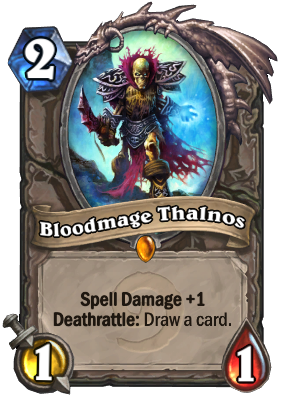
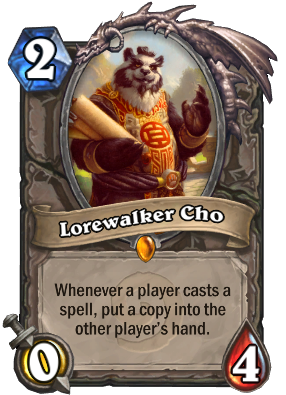
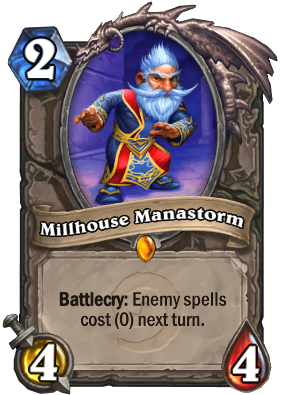
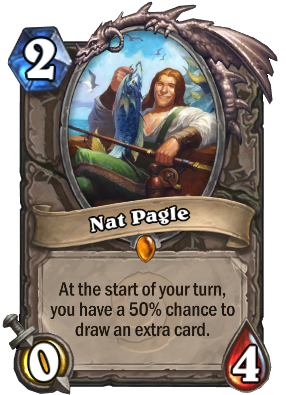
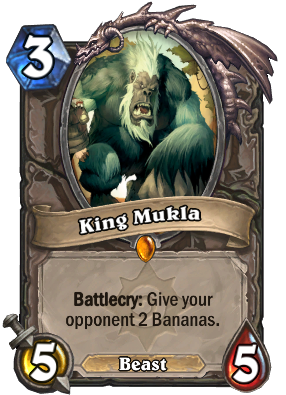
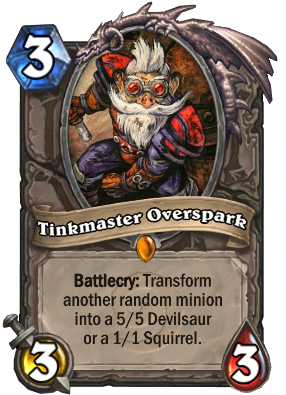
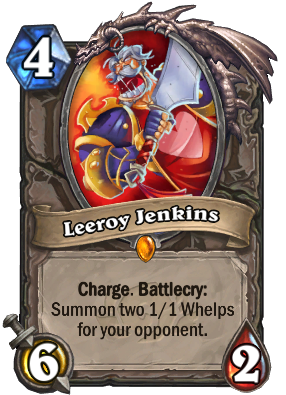
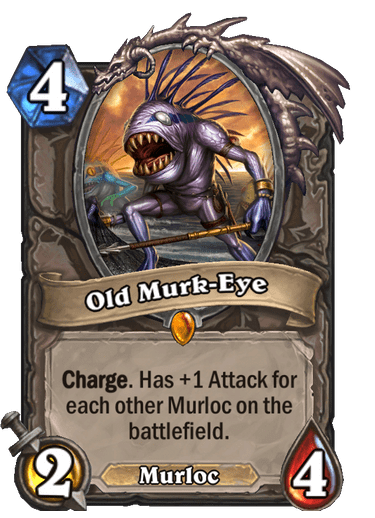
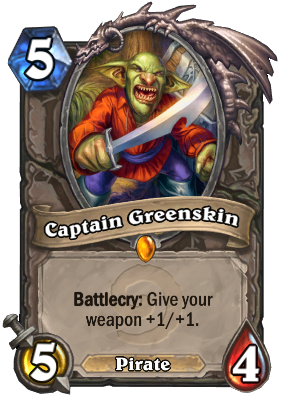





Comments
I love these.
Lorewalker Cho I used back in Mean Streets in my handbuff paladin. It only had a few spells to maximize the handbuffs and Cho, once buffed, was annoying to remove without a spell, so you usually got something back. Fun times!
Millhouse Manastorm I had in a deathrattle DemonHunter deck. Using Piloted Reaper to pull him out and surprise people was funny.
Old Murk-Eye was kind of another Hogger. In Vanilla he wasn't elite but had a long patrol path on a beach. Him and his posse would sneak up on people making for some memorable deaths or sprints away from him while hearing that classic murloc battlecry. I appreciate cards like this in Classic. It is nice not all the cards are big lore bombs but also a "hey I died to this guy" for those of us who played WoW.